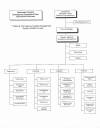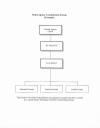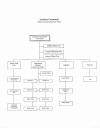

INCIDENT MANAGEMENT SYSTEM
ALEXANDER COUNTY EMERGENCY OPERATIONS PLAN
Reviewed: Aug. 23, 2011
| I. |
PURPOSE |
||||
|
This Appendix provides information and
directions on the management of emergency and non-emergency responses,
managed by the National Inter-Agency Incident Management System (NIIMS).
NIMS is mandated by the Federal Government for Federal, State and Local
Response Agencies. |
|||||
|
NOTE: Homeland Presidential
Directive/HSPD-5-Homeland Security Act of 2002, Public Law 107-296. |
|||||
|
Alexander County Government and the Town of
Taylorsville has adopted by resolution the National Inter-Agency Incident
Management System as the system for management of emergency and
non-emergency situations, major disaster, mitigation and recovery phases. |
|||||
| II. |
SITUATION AND ASSUMPTIONS |
||||
| A. |
Situation |
||||
| 1. |
The Incident Management Systems must follow
the guidelines set forth in National Inter-Agency Incident Management
Guidelines of 2001. Also, US
Presidential Directive HSPD/5. |
||||
| 2. |
The system will provide a consistent
nationwide approach for Federal, State, and Local Governments to work
effectively together to prepare for, respond to, and recover from domestic
incidents, regardless of cause, size and/or complexity. |
||||
| 3. |
To provide for interoperability and capability
among Federal, State and Local capabilities. |
||||
| 4. |
The National Inter-Agency Incident Management
System (NIIMS) will include a core set of concepts, principles,
terminology, training and identification of resources. |
||||
| 5. | The Incident Management System must function utilizing the five (5) functions within the system: | ||||
| a. | Command | ||||
| b. | Operations | ||||
| c. | Planning | ||||
| d. | Logistics | ||||
| e. | Finance/Administration | ||||
| f. | The Incident Management System must follow the identification of resources and management of resources, including systems for classifying types of resources including manpower and equipment. | ||||
| g. | Resources must meet the qualification requirements as addressed in the Fire Scope Field Guidelines (ICS 420-1), January 2001 edition. | ||||
| h. | The Incident Management training format is to follow the National Training Curriculum as written. | ||||
| i. | Training Module requirements for the Incident Management System: | ||||
| (1) | Introduction to ICS: 3 hours | ||||
| (2) | Basic ICS: 12 hours | ||||
| (3) | Intermediate ICS: 27 hours | ||||
| (4) | Advanced ICS: 22 hours | ||||
| (5) | ICS for Executives: 4 hours | ||||
|
j.
|
Alexander County and the Town of Taylorsville will define the levels of training for their respective personnel in regards to Incident Command System training. This training will follow the guidelines explained in Section II, Situation and Assumptions "h" & "i" of this document | ||||
| k. |
NIIMS Incident Command System will be utilized
to develop the County’s Emergency Operations Plan and Standard Operating
Guidelines. |
||||
| III. |
CONCEPTS OF OPERATIONS |
||||
| A. |
The Incident Command System must be utilized
in all response modes, both emergency and non-emergency situations. |
||||
| B. | The use of the Incident Command System functions will be determined by the following: | ||||
| 1. | Determined by the Incident Management Committee | ||||
| 2. | As addressed in the Emergency Operations Plan | ||||
| 3. |
Determined by the agency having jurisdictional
authority |
||||
| C. | Incident Command System functions: | ||||
| 1. | Incident Commander | ||||
|
The Incident Commanders responsibility is the
overall management of the incident. On most incidents, the Command
activity is carried out by a single Incident Commander. The Incident
Commander is selected by the authority having jurisdiction, qualifications
and experience. The Incident Commander may have a Deputy from the same
agency, assisting agencies, or cooperating agencies. Deputies must have
the same qualifications and experience as the person for whom they are
replacing. |
|||||
| 2. | Operations Section Chief | ||||
|
The Operations Section Chief is a member of
the General Staff and is responsible for the management of all tactical
operations directly applicable to the primary mission. The Operations
Section Chief, in accordance with the Incident Action Plan as approved by
the Incident Commander. The Operations Section Chief can utilize Deputies
for support or relief, however these Deputies must have the same
qualifications and experience as the person for whom they are replacing. |
|||||
| 3. | Planning Section Chief | ||||
|
The Planning Section Chief is a member of the
General Staff and is responsible for the collection, evaluation,
dissemination, and use of information about the development of the
incident status or resources. Information is needed to (1) understand the
current situation (2) predict probable course of incident events, and (3)
prepare alternative strategies and control for the incident. |
|||||
| 4. | Logistics Section Chief | ||||
|
The Logistics Section Chief is a member of the
General Staff and is responsible for providing facilities, services, and
materials in support of the incident. The Logistics Section Chief
participates in development and implementation of the Incident Action
Plan, and activates and supervises the branches and units within the
section. |
|||||
| 5. | Finance/Administration Section Chief | ||||
|
The Finance/Administration Section Chief is
responsible for all financial, administrative, and cost analysis aspects
of the incident and for supporting the Finance/Administrative Section. |
|||||
|
NOTE: Full descriptions and position
responsibilities can be located in the Fire Scope Field Guidelines (ICS
420-1), January 2001 edition. |
|||||
| IV. |
ORGANIZATIONAL FORMATS |
||||
| A. |
Organizational formats can follow many
different configurations due to the complexity of the incident and as
required by the authority having jurisdiction and/or the County Emergency
Operations Plan. |
||||
| B. | Organizational structures for the Emergency Operation Plan (EOP) may follow the following sample formats: | ||||
| 1. | Alexander County Emergency Operations Plan, Organizational Structure | ||||
| 2. | Multi-Agency Coordination System – MACS Organizational Structure | ||||
| 3. | Area Command Organizational Structure – Utilizing Single or Unified Command | ||||
| 4. | Simple Incident Management System Structure | ||||
|
Note: The organizational structure may be
as simple as need be or it may grow to meet the needs or requirements of
the Incident Action Plan (IAP). |
|||||
| V. |
DIRECTION AND CONTROL |
||||
|
The overall direction and control of an
emergency/non-emergency incident will be managed by the format set forth
by the Emergency Operations Plan utilizing Alexander County's
Incident Management System Plan as approved by the
Board of the County Commissioners
and/or the Town Council. |
|||||
| VI. |
CONTINUITY OF GOVERNMENT |
||||
|
Lines of succession for agencies and officials
involved in a disaster or emergency/non-emergency incident is in
accordance to the County Emergency Operations Plan. |
|||||
| VII. |
ADMINISTRATION AND LOGISTICS |
||||
| A. |
All agencies involved or addressed in the Plan
will utilize the NIIMS Incident Management System to manage all incidents
in the County and Town. The Emergency Management Director will provide
operations and revisions as needed and disseminate to the County and Town
for approval. |
||||
| B. |
Training Programs for Emergency Responders and
administration will be available through the NC Community College System,
NC Division of Emergency Management, and Alexander County Emergency
Management. The Emergency Management Director or his designee will provide
in-service updates as needed or requested. |
||||
| C. |
Exercise schedules for the Incident Management
system will be designed by the County Emergency Management Director as
directed by Federal and State Agencies. (I.e., tabletop exercises,
functional exercises, and full scale exercises). |
||||
| VIII. |
PLAN DEVELOPMENT AND MAINTENANCE |
||||
| A. |
The Emergency Management Director will
coordinate with County/Town, and other Local Government Planning Groups
for development and maintenance of the plan. |
||||
| B. |
The Incident Management System Appendix is
designed to be utilized on all incidents, large or small, and is an
integral part of the Emergency Operations Plan. |
||||
| IX. |
AUTHORITIES / REFERENCES |
||||
| A. | Alexander County Ordinances | ||||
| B. | Town of Taylorsville Approval | ||||
| C. | Alexander County Emergency Operations Plan | ||||
| D. | Emergency Response Agencies | ||||
| E. | Presidential Directive # 5 | ||||
| F. | Firescope Field Operations Guide - ICS-420-1, January 2001 Edition | ||||
| 1. EOP Organizational Structure | 2. Multi-Agency Coordination System | 3. Area Command Organizational Structure | 4. Simple Incident Management System Structure |
 |
 |
 |
 |